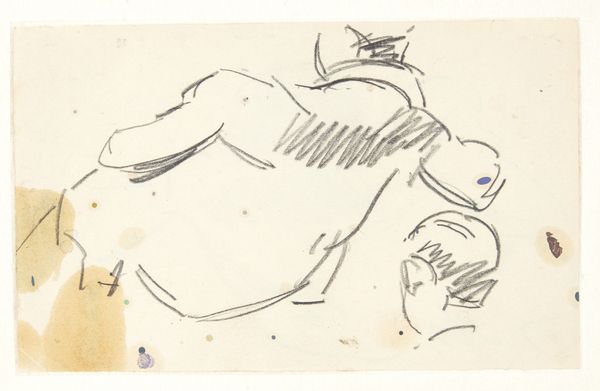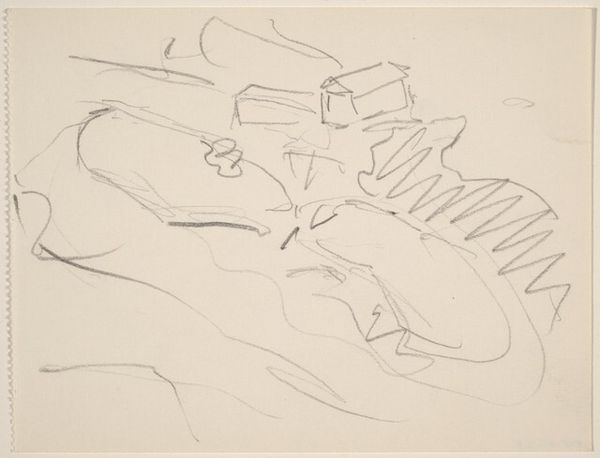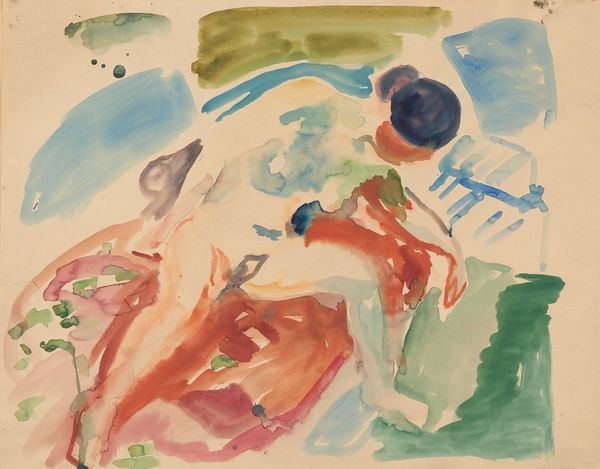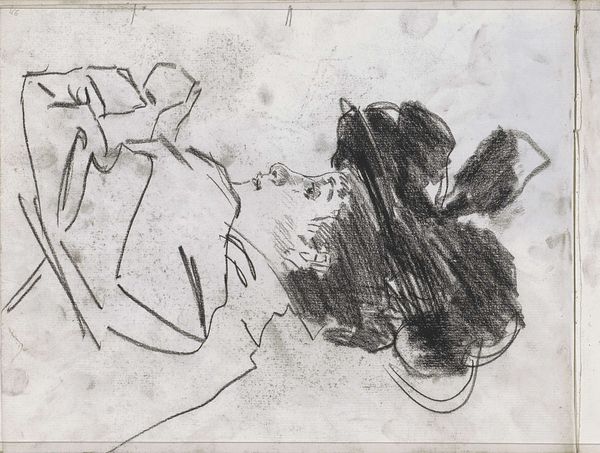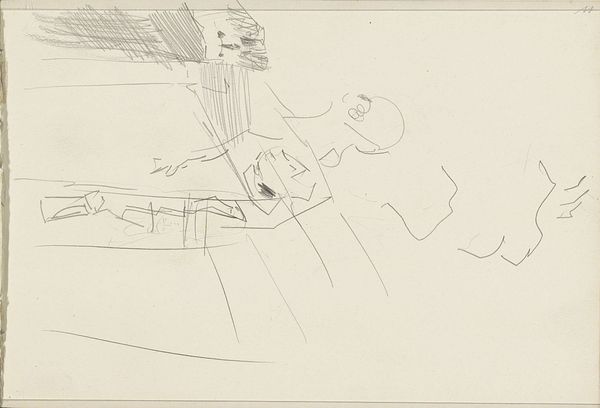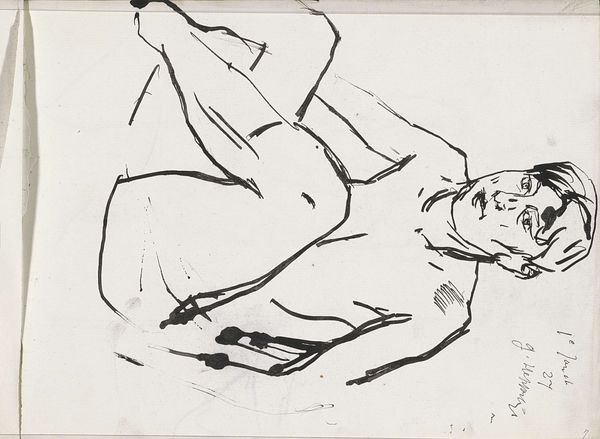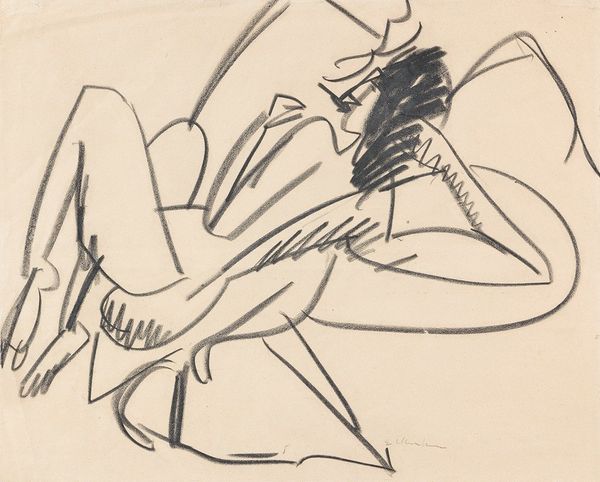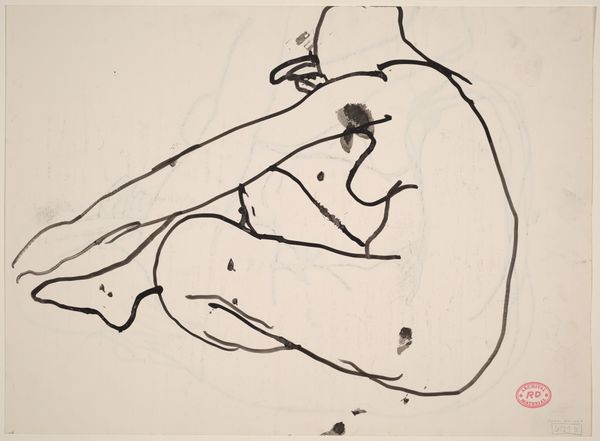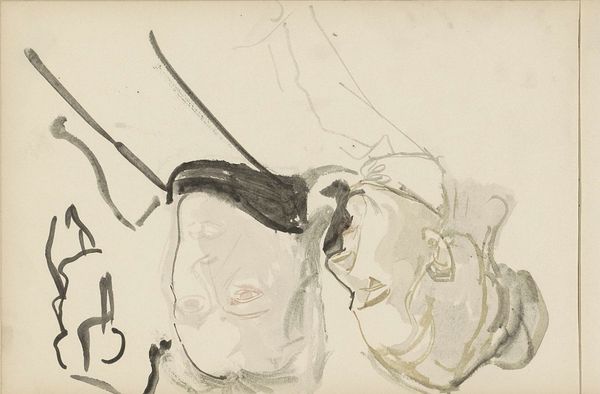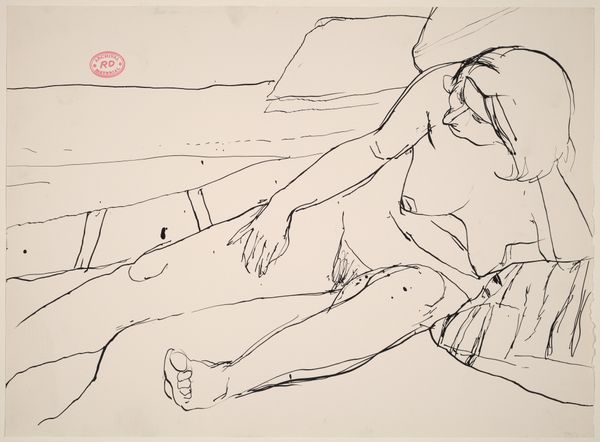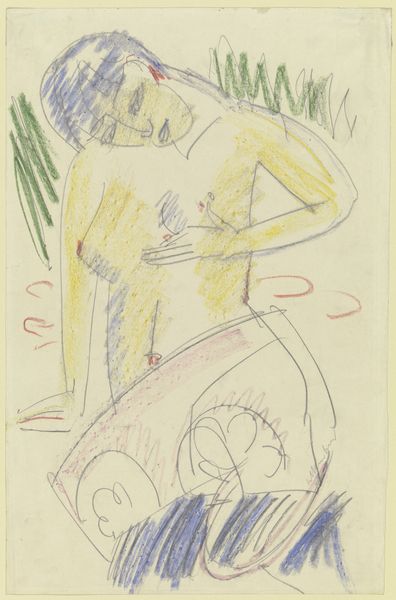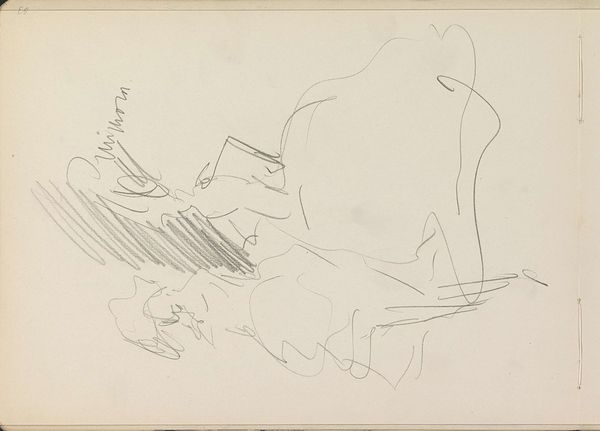
drawing, pastel
#
portrait
#
drawing
#
german-expressionism
#
figuration
#
expressionism
#
line
#
pastel
#
nude
#
watercolor
Copyright: Public Domain: Artvee
Curator: This is "Liegendes Mädchen" or "Reclining Girl" created by Ernst Ludwig Kirchner around 1909 using pastel on paper. What strikes you most about it? Editor: The casual pose and pastel colors create an intriguing mix of vulnerability and ease. There's a lightness, almost a sense of carefree abandon, yet something about the sharp lines hints at underlying tension. Curator: Kirchner's involvement in Die Brücke during this period strongly influenced his exploration of human emotion through raw, unidealized figuration. It's key to acknowledge the social and political climate that fueled their artistic rebellion against academic traditions, shaping not only their style, but their very perception of the individual in society. Editor: I see that. You can feel that rejection of established norms in the loose, almost unfinished quality of the lines. Considering Kirchner's focus on representing modern life, does this drawing speak to contemporary perceptions of the female form or feminine roles in German society? Curator: Absolutely. By situating "Reclining Girl" within its historical context, it becomes apparent how Kirchner uses the female body to critique societal constraints. We must ask who is this “girl,” really, what’s her economic class, how does that inform her freedom or lack thereof to lounge. Expressionist art wasn't just about aesthetic innovation; it was about challenging societal structures through representing previously suppressed voices and perspectives. Editor: Though, even given that contextual reading, it’s hard to ignore how the gaze can fall into voyeurism. We have to be conscious of how these images participate in the construction of female identity by the male gaze in art history. How might contemporary feminist readings further complicate, or even reclaim, the image of "Reclining Girl?" Curator: That's a valid and necessary consideration. From today’s intersectional lens, we have to unpack power dynamics inherent in the artist-model relationship, probing beyond his artistic intentions to the broader cultural impact. By including those marginalized perspectives, we enable a deeper and richer understanding. Editor: It highlights art’s power to simultaneously reflect and reinforce the societal power structures within which it exists. Curator: Indeed. Thinking about it now, approaching these artworks with sensitivity opens a dialog, offering a more inclusive view of art and society.
Comments
No comments
Be the first to comment and join the conversation on the ultimate creative platform.

